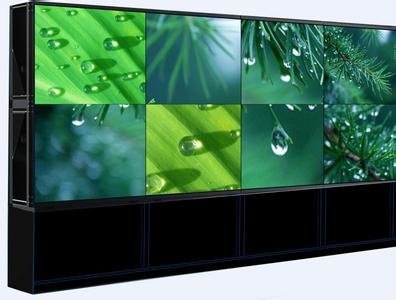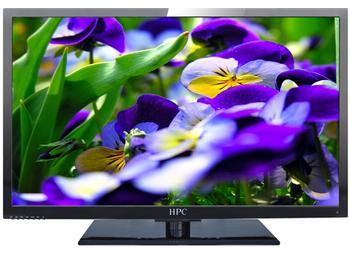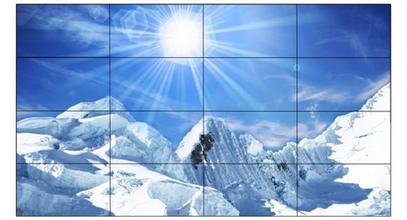Comparison of LCD liquid crystal splicing and DLP rear projection and PDP plasma technology
The current world is in the era of digital technology revolution, and various digital technologies have been widely used in various industries, from printing industry to home entertainment to video surveillance, and the digital wave is getting deeper and deeper. With the rapid development of digital technology and display technology, the world is entering a high-definition era. The digitalization and high definition of video have become the most urgent needs at present. Who can provide a high-definition solution with competitiveness, who can be in the digital age? Grab a place. In this era, the big screen industry has also embarked on the trend of digital innovation. The analog signal display device (CRT) has gradually been eliminated, and the all-digital LCD splicing curtain wall system has emerged.
LCD splicing versus rear projection (DLP), plasma (PDP) comparison
Fully digital, larger, thinner and more high-definition, is the direction of technology development of splicing curtain wall (TV wall). Therefore, in recent years, video wall gradually moves from traditional CRT to liquid crystal splicing (HDID), rear projection (DLP) and plasma (PDP). )development of. Among them, the prospect of liquid crystal splicing is the most extensive. LCD splicing has more technical advantages than rear projection and plasma, and can meet the needs of various applications. Below we will list the technical principles of these three display methods, and analyze their respective advantages and disadvantages, as well as the advantages of HDID splicing curtain wall.
1. The principle of rear projection
The implementation principle of the rear projection is very simple. A projector is arranged inside the device, and the emitted image is magnified by the lens and projected onto the back of the screen, which is a rear projection. It is the rear projection that is born based on this principle. Because of the different types of projectors, it can be divided into CRT (Cathode Ray Tube), LCD (Liquid Crystal), DLP (Digital Light Processing) and so on. CRT rear projection belongs to the low-end products in the rear projection camp, while other rear projections are correspondingly high-end products, among which DLP rear projection is the best, its image clarity, brightness, color, viewing angle and volume Both have greatly improved the traditional CRT rear projection. The rear projections described below refer to DLP rear projections.
Advantages: Cheap low-end display solutions.
Disadvantages: Excessive volume and weight, long-term uninterrupted work, speeding up the aging of the backlight.

2. Plasma principle
PDP is a display technology that uses gas discharge and works like a fluorescent lamp. It uses a plasma tube as a light-emitting element. Each plasma tube on the screen corresponds to one pixel. The screen uses glass as a substrate, and the substrates are separated by a certain distance to form a discharge space. The discharge space is filled with a mixed inert gas such as helium or neon as a working medium, and a metal oxide conductive film is coated on the inner surface of the two glass substrates as an excitation electrode. When a voltage is applied to the electrode, a plasma discharge phenomenon occurs in the mixed gas in the discharge space, which is also called a plasma effect. The plasma discharge generates ultraviolet light, and the ultraviolet light excites a fluorescent screen coated with red, green and blue phosphors, and the fluorescent screen emits visible light to reveal an image.
Advantages: bright colors, high brightness, high contrast
Disadvantages: Power consumption and heat generation are very large, severe burns, and the image quality decreases with time.

3. Liquid crystal principle
Liquid crystal is a principle in which a liquid crystal is deflected by a voltage. Since the liquid crystals constituting the screen can display three primary colors of red, green, and blue at the same point, or one point of the liquid crystal is superposed by three points, they are arranged in a certain order, and these liquid crystals are stimulated by voltage. , you can display different colors, different proportions of the combination can show a variety of colors. The liquid crystal itself is not illuminated, and it backlights the light tube, so the liquid crystal screen depends on the backlight tube.
Since the liquid crystal adopts point imaging, the more dots formed in the screen, the finer the imaging effect, and the vertical and horizontal dots constitute the resolution of the liquid crystal television, and the higher the resolution, the better the effect.
Advantages: high resolution, thin thickness, light weight, low energy consumption, long life, no radiation.
Disadvantages: The stitching seam is slightly larger.

4. Summary
The size and weight of the rear projection technology is too large, and the key technical indicators are far less than plasma and liquid crystal, and the long-term uninterrupted work, speeding up the aging of the backlight, due to the life of only a few thousand hours, if running 24 hours a day, several The backlight needs to be replaced in the month. Due to the large power consumption and heat generation, and the severe burn phenomenon, the plasma is not suitable for displaying the static monitoring screen for a long time, and after being used for splicing, the temperature rise of the whole machine is higher, and the device is easily burned. LCD is unique in flat panel display technology. Its thin thickness, light weight, low energy consumption, long life, no radiation, and excellent performance of various key performance indicators have made it the mainstream of development and the prospects are promising.
CCTV Power Supply,CCTV Power Supply Box,CCTV DC Distributed Power Box
Chinasky Electronics Co., Ltd. , https://www.chinacctvproducts.com